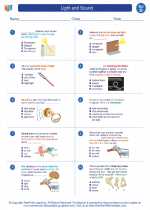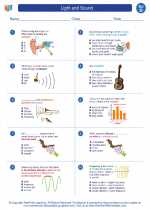Solid
A solid is one of the three main states of matter. Solids have a definite shape and volume. The particles in a solid are packed closely together and are held in a fixed position by strong forces of attraction. This means that solids maintain their shape and do not flow like liquids or gases.
Examples of solids include ice, wood, metal, and plastic. Solids are an essential part of our everyday lives and have various properties that make them unique and interesting to study.
Study Guide: Properties of Solids
- Definite Shape: Describe how the particles in a solid are arranged and why they maintain a fixed shape.
- Definite Volume: Explain why solids have a specific volume and how this differs from the volume of liquids and gases.
- Particle Arrangement: Compare the arrangement of particles in a solid to those in a liquid and a gas.
- Forces of Attraction: Discuss the forces of attraction between particles in a solid and how they contribute to the solid's properties.
- Examples of Solids: Identify common examples of solids in the environment and their uses in everyday life.
- Changes in State: Explore how solids can change state to become liquids or gases under specific conditions.
Understanding the properties of solids is crucial to understanding the behavior of matter in our world. By studying solids, we can gain insights into their structure, behavior, and importance in various scientific and practical applications.
[Solid] Related Worksheets and Study Guides:
.◂Science Worksheets and Study Guides Fourth Grade. Light and Sound
Study Guide Light and sound
Light and sound  Worksheet/Answer key
Worksheet/Answer key Light and sound
Light and sound  Worksheet/Answer key
Worksheet/Answer key Light and sound
Light and sound  Worksheet/Answer key
Worksheet/Answer key Light and sound
Light and sound  Vocabulary/Answer key
Vocabulary/Answer key Light and sound
Light and sound  Vocabulary/Answer key
Vocabulary/Answer key Light and sound
Light and sound  Vocabulary/Answer key
Vocabulary/Answer key Light and sound
Light and sound 

 Worksheet/Answer key
Worksheet/Answer key
 Worksheet/Answer key
Worksheet/Answer key
 Worksheet/Answer key
Worksheet/Answer key
 Vocabulary/Answer key
Vocabulary/Answer key
 Vocabulary/Answer key
Vocabulary/Answer key
 Vocabulary/Answer key
Vocabulary/Answer key

The resources above cover the following skills:
PHYSICAL SCIENCE (NGSS)
Waves and their Applications in Technologies for Information Transfer
Students who demonstrate understanding can:
Develop a model of waves to describe patterns in terms of amplitude and wavelength and that waves can cause objects to move.